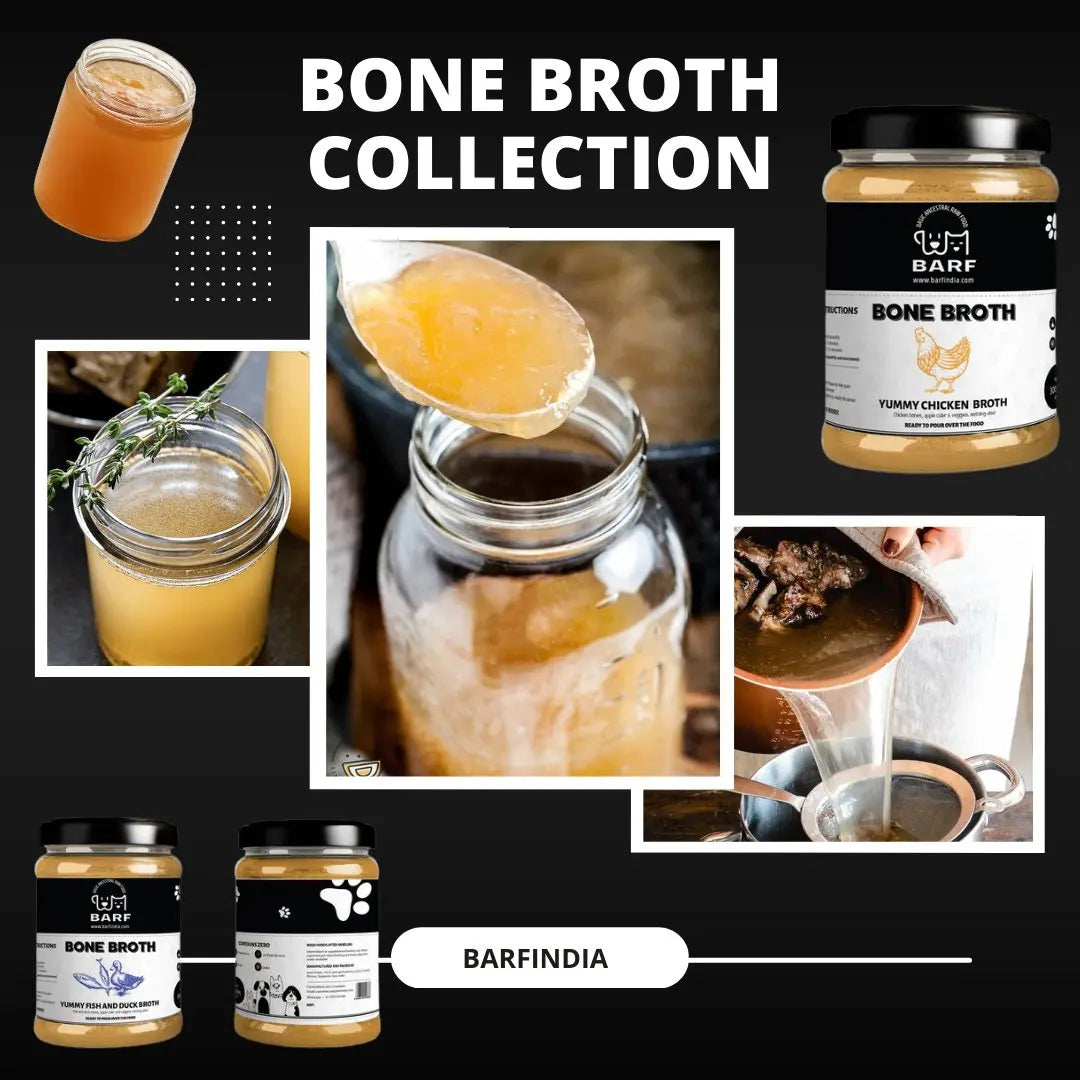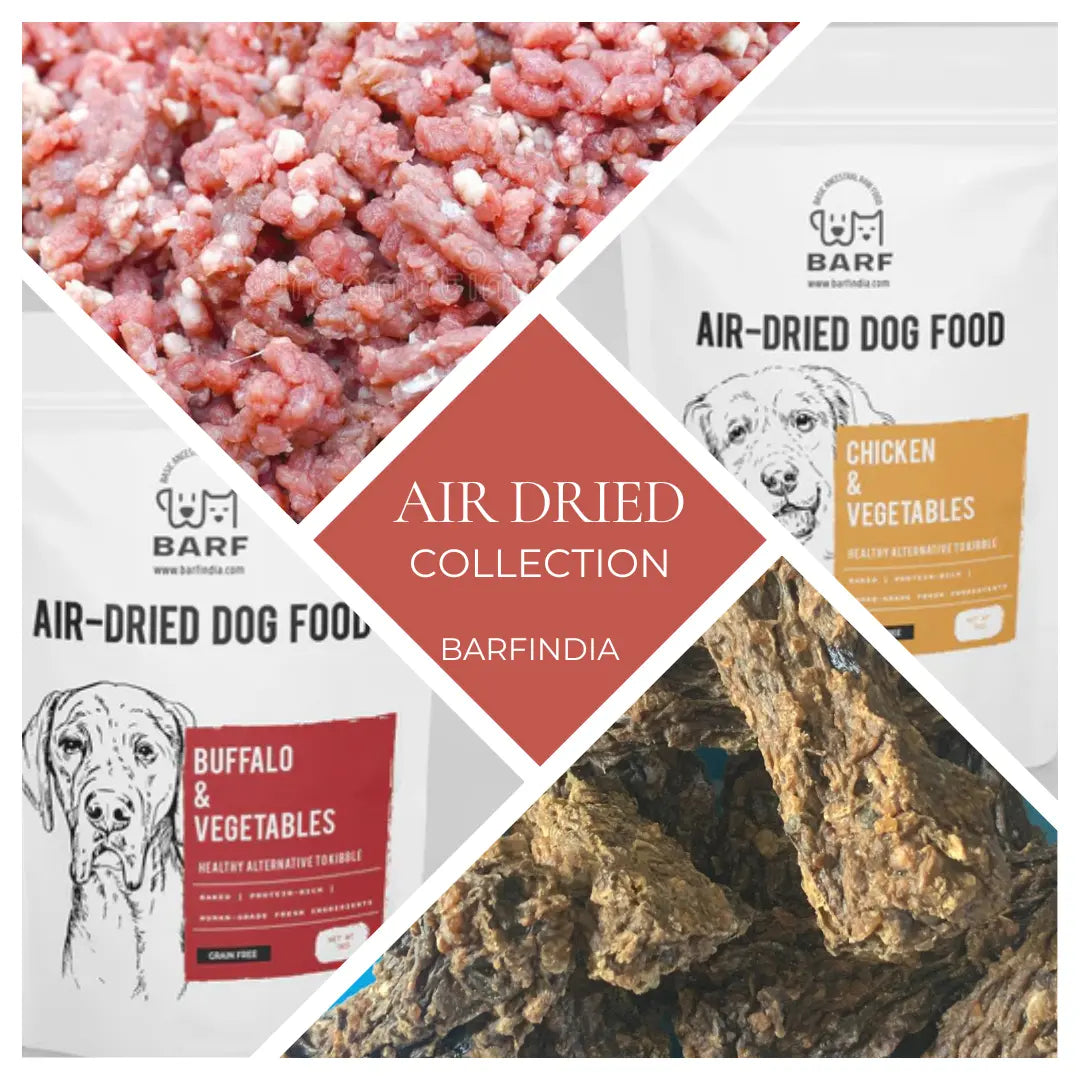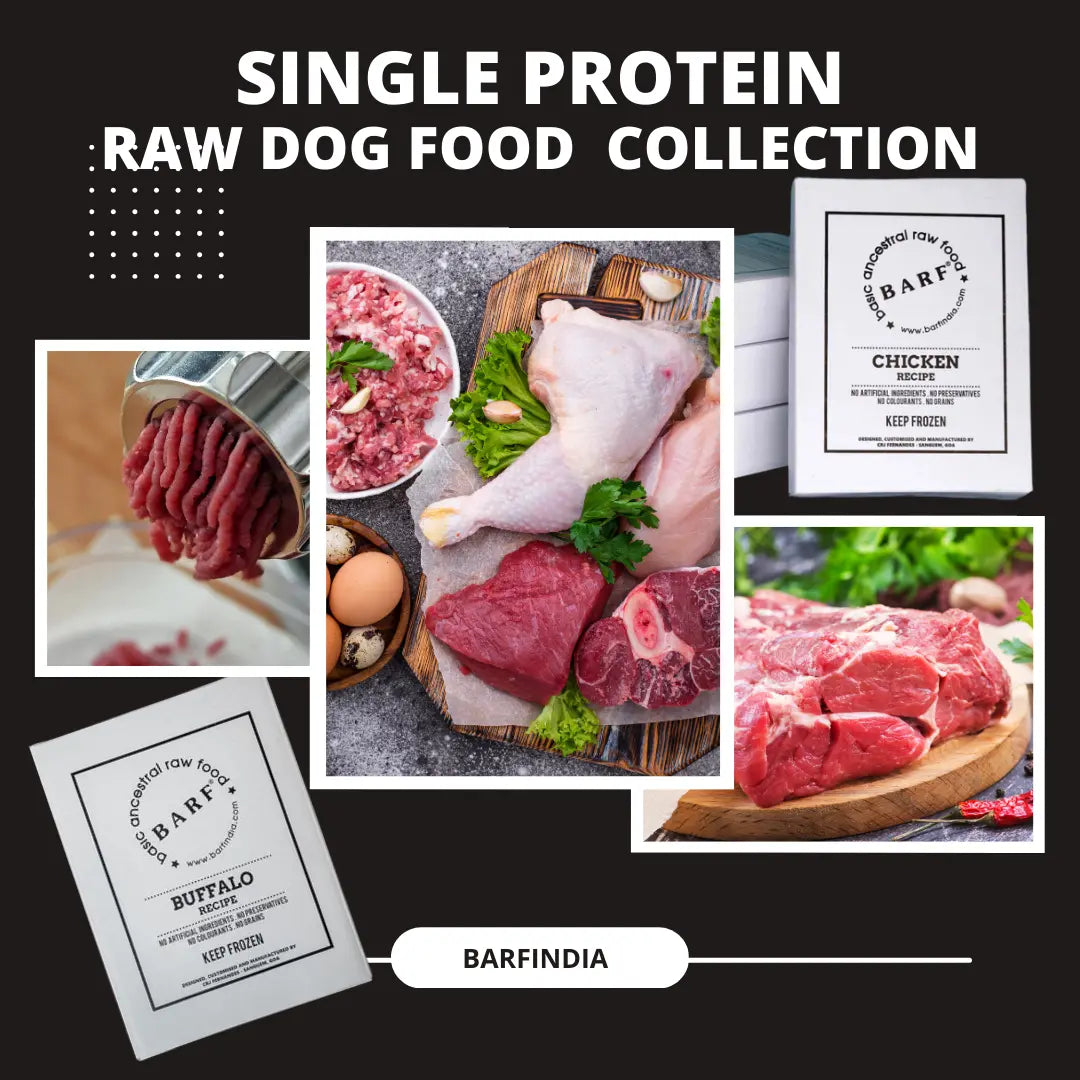Omega 3 and its importance in Raw feeding
B.A.R.F. India AdministratorDoes your dog’s diet include Omega 3 ?
We have heard of the numerous benefits of incorporating Omega 3 fatty acids in our diets. You walk across your supermarket and you see fish oil capsules, Omega 3 powder supplements and many more. Omega-3s have certainly proven to reduce the risk of coronary heart disease, cancer, depression, arthritis etc. But did you know that your little pooch can also benefit from having a source of Omega 3 in his diet?
Omega 3 as fatty acids:
Omega 3's are widely classified as essential fatty acids, which means that our body has a requirement for Omega-3 to function, but cannot generate on its own. Simply put, Omega 3's can only come from your diet. Fats have always been controversial and people looking to transition to a healthier lifestyle, tend to cut down on fats before anything else. But this can be highly counterproductive, if you are not informed about the types of fats and the difference it makes to your body’s daily functioning.
What are Omega 3's?
Omega 3's are known as polyunsaturated fatty acids or PUFAs and they are very crucial in improving brain function and they help with the general growth and development of the body. It is very important to ensure that you include some source of Omega 3's in your diet. That being said, let’s learn more about what Omega 3's really are and how they can help your dog.
WHY DOES MY DOG NEED FATS?
There are three main powerhouse sources for your dog’s body to fuel itself – proteins, carbohydrates, and fats. Proteins are the biggest source of energy for your dog. It helps with muscle growth, skin, hair, nails, soft issue and virtually every other function their body performs. A dog’s ancestral diet contained a minimum of 15-20% protein from a variety of sources including poultry, wild game meat (rabbit, boar, deer, squirrels etc.), and occasionally, fish. Carbohydrates have the smallest requirement in our canine friends, as these are an alternative source of energy but do nothing that proteins cannot do. While feeding a small amount of carbohydrates is acceptable, proteins should constitute the largest portion of your dog’s meal. This is one of the many reasons why commercially available dog food (popularly called “kibble”) is the worst diet you can provide to your pet since they constitute over 40% starch / carbohydrates, but that topic is for my next post. Last, but definitely not the least, are fats. Fats also provide energy, but that’s not all they do. They help in cell growth, better absorption of Vitamins A, D, E, K and they play a major role in the body’s inflammatory response. Omega-3s have anti-inflammatory properties that lower your dog’s risk of developing cancer, kidney disease, arthritis etc. This equates to the fact that you are increasing the lifespan and improving the quality of life for your dog. Who doesn’t want that?
STRIKE A BALANCE:
Incorporating fats in your dog’s diet is important, but you also need to ensure that the quantities of these energy sources are well balanced. When you dig a little deeper into fatty acid content in foods, you will come across another component – Omega 6. I came across a post on
that said: Too much omega 6 and not enough omega 3, and bad things happen. These bad things are not minor, folks. Excessive intake of omega 6 fatty acids suppress cells that are key in the body’s natural cancer fighting ability (Natural Killer cells and cytotoxic T cells). The omega 6 group promotes inflammation, which is critical in cancer development. They also stimulate cancer cells directly by turning on a path in the cancer cells called PI Kinase, one of the central signalling events in cancer cells which make them behave like…cancer cells.
Omega-3 and Omega-6:
While Omega-3 and Omega-6 are fatty acids, they however, have, broadly varying functions. Omega-3 is anti-inflammatory and Omega-6 is pro-inflammatory. Does this mean Omega-6s are bad for your dog? Absolutely not. The body needs to produce antibodies to counteract any foreign body, and this is only possible with an active immune system that triggers an inflammatory response. Without a proper inflammatory response, your dog’s immune system will fail and cause degeneration of body organs over time. This is why it is extremely crucial to balance your dog’s diet so that they receive the right ratio of Omega-3 and Omega-6. Don’t worry, it’s not that difficult. I came across a very handy chart on
that provided the ratio of Omega 3:Omega 6 in various food sources which will help all raw feeders get a good overview of whether their dog’s diet is nutritionally balanced. 


 If your dog predominantly eats animal meat with no other source of Omega-3s, you may unintentionally be causing an imbalance in their body.This may be overwhelming to newbies who are just starting out with raw food, but the key is to start somewhere. You need to try to ensure that these food sources are balanced in the best way possible to keep the ratio as low as you can. Raw feeders must always include some fish in their dog’s bowl. First and foremost, your dog will not able to resist the taste, and secondly, you are providing all the good Omega-3s to keep them healthy. A few other great plant-based sources of Omega 3's are chia seeds, hemp seeds, and flax seeds, all of which are completely safe to feed your dog.
If your dog predominantly eats animal meat with no other source of Omega-3s, you may unintentionally be causing an imbalance in their body.This may be overwhelming to newbies who are just starting out with raw food, but the key is to start somewhere. You need to try to ensure that these food sources are balanced in the best way possible to keep the ratio as low as you can. Raw feeders must always include some fish in their dog’s bowl. First and foremost, your dog will not able to resist the taste, and secondly, you are providing all the good Omega-3s to keep them healthy. A few other great plant-based sources of Omega 3's are chia seeds, hemp seeds, and flax seeds, all of which are completely safe to feed your dog.
ALA, EPA AND DHA:
We may have noticed the terms ALA, EPA, DHA on some human food labels and very recently, on a lot of pet food labels as well. Research shows that these Omega-3 fatty acids are just as beneficial to dogs as they are to us. But what exactly are these terms? ALA or Alpha Linolenic Acid, is considered an inactive form of Omega-3 (specifically for dogs). This means that the digestive enzymes need to break it down in order to be absorbed into the body. While humans have the necessary enzymes to do so, there is no current research that shows that dogs have the enzymes to metabolize ALA. EPA (Eicosapentaenoic acid) and DHA (Docosahexaenoic acid) are two other types of Omega-3 fatty acids and these are what we need for complete nourishment of our pets. All three (ALA, EPA, DHA) are unsaturated fatty acids, which indicates that these substances can easily be broken down by the body to be utilized.
What's in your kibble bag:
Here’s the catch – You walk into your pet food store and you see a bag of dry dog food (“kibble”) and you see the label “With EPA and DHA”. After you understand how beneficial these ingredients are, you are extremely happy that your favorite dog food brand is now adding some essential Omega-3 fatty acids to the food. Don’t be fooled yet! Omega-3 fatty acids easily denature under high temperatures and dry dog food is processed under these conditions, which essentially means that whatever Omega 3's were added to the food, degraded during the processing of kibble. This is merely false advertising. We need to look for more natural sources of Omega-3s for our dogs, which comes from a variety of fish.
OMEGA-3 HEALTH BENEFITS:
While dogs and humans have very different growth and digestive system requirements, Omega-3 fatty acids can help both these species immensely. Let’s look at what this super-food source can do for our dogs!
-
Inflammatory Skin Disorders
Due to the anti-inflammatory properties, Omega 3's help in reducing several skin-related issues including dermatitis (skin allergy), excessive shedding leading to bald spots, development of heat spots, itchiness, dull coat etc. Research shows several dogs benefited from consuming some amount of Omega 3's everyday leading to a healthier and shinier coat, lower occurrences of skin allergies and lesser shedding.
-
Cardiovascular Function
Just as scientific studies have shown a reduction in the risk of coronary disease in human beings, dogs that consumed Omega-3s in their diet, produced a lower amount of inflammatory cytokines leading to better heart health – this includes lowering of heart rate and blood pressure to optimum. Results have also shown better survival rates in dogs that suffered from any type of heart disease (dilated cardiomyopathy, chronic valvular disease, ventricular arrhythmia). Omega 3's help reduce cholesterol and triglycerides levels in the blood, leading to a healthier heart. -
Osteoarthritis
As mentioned above, Omega 3's help reduce the amount of inflammatory cytokines in dogs. This is also means that these fatty acids can reduce the risk of bone diseases including osteoarthritis. Dogs have shown improved loco-motor ability and higher energy on a daily basis after consumption of Omega 3'sin their diet. -
Yeast Infections:
If you have noticed a pungent odour in your dog’s paws or ears combined with dry and flaky skin, it mostly likely indicates a yeast infection. Yeast can spread rapidly to other parts of the body and even transmit to humans. Omega-3s have been shown to reduce the growth rate of yeast infection in dogs (for example, Malasseziapachydermatis). It has been identified that fatty acids may play a very important role in reducing the risk of developing yeast infections, leading to cleaner ears and healthier skin for longer periods of time between baths and professional ear cleaning sessions.
-
Cancer:
Every pet owner’s biggest fear is this very word – Cancer. With the increasing rate of dog deaths due to cancer, it is the undeniable truth. Unfortunately, the over-processed commercial food has been a contributory cause to the rise in the epidemic. Fortunately, although the studies on the effect of Omega-3s on cancer risk are relatively new, the results have been extremely positive. These fatty acids have shown a reduction in metastasis, inhibition of the growth of colonial cancer cells and slowing down the development of cancer. Some research also indicates that consumption of Omega-3s help improve responsiveness to chemotherapy. -
Overall Health & Happiness
Dogs that include some source of Omega 3's are generally healthier, have higher energy levels. Some research also shows that it has shown to reduce aggression in dogs. This may be due to the improvement of the overall health, leading to happier pets.
 It is generally better to include natural sources of Omega-3s in your dog’s food. While there are several supplements on the market, natural whole foods and species appropriate raw foods have proven to be highly beneficial in maintaining better health. Both Omega-3 and Omega-6 are highly vulnerable to heat. So even if your dry dog food shows these ingredients on the label, as the high temperature generated in processing kibble and canned food destroys these fatty acids. However, the meat-meal content in kibble provides a very high dosage of Omega-6 and not enough Omega-3 causing an imbalance leading to many of the current diseases we see in dogs. Omega-3s can also become rancid very quickly with exposure to oxygen. Therefore, it is important to tightly seal any fish oils and keep them refrigerated once opened. Generally, fish oil bottles last about 90 days from the time of opening before they turn rancid. Salmon oil, Krill oil, and other types of fish oils are extremely common sources of Omega-3s. It is the responsibility of every pet owner to ensure that their dog’s food is retrieved from trusted sources. It is also every pet owner’s right to know exactly what ingredients are used in their dog’s food. The best way to do this is to use real, whole, and natural foods as much as possible. Happy Feeding!!!
It is generally better to include natural sources of Omega-3s in your dog’s food. While there are several supplements on the market, natural whole foods and species appropriate raw foods have proven to be highly beneficial in maintaining better health. Both Omega-3 and Omega-6 are highly vulnerable to heat. So even if your dry dog food shows these ingredients on the label, as the high temperature generated in processing kibble and canned food destroys these fatty acids. However, the meat-meal content in kibble provides a very high dosage of Omega-6 and not enough Omega-3 causing an imbalance leading to many of the current diseases we see in dogs. Omega-3s can also become rancid very quickly with exposure to oxygen. Therefore, it is important to tightly seal any fish oils and keep them refrigerated once opened. Generally, fish oil bottles last about 90 days from the time of opening before they turn rancid. Salmon oil, Krill oil, and other types of fish oils are extremely common sources of Omega-3s. It is the responsibility of every pet owner to ensure that their dog’s food is retrieved from trusted sources. It is also every pet owner’s right to know exactly what ingredients are used in their dog’s food. The best way to do this is to use real, whole, and natural foods as much as possible. Happy Feeding!!!




